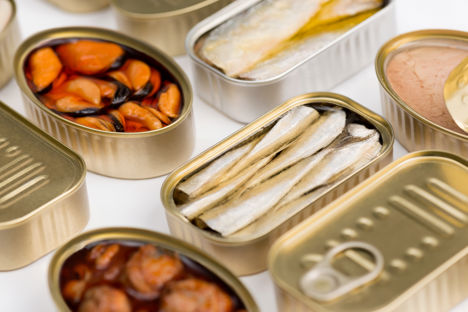
Ingredient focus: Galician tinned seafood
The north west of Spain is famed for its exceptional preserved seafood. Rachel McCormack takes a closer look at the origins of this tradition and finds out what tinned goods are available in Galicia today.
Ingredient focus: Galician tinned seafood
The north west of Spain is famed for its exceptional preserved seafood. Rachel McCormack takes a closer look at the origins of this tradition and finds out what tinned goods are available in Galicia today.
Looking at a map of Galicia it is really easy to see why the sea is such an important part of Galicians’ lives. With a coastline of almost nine-hundred-and-thirty-five miles, more than an eighth of Spain’s total coastline, large numbers of Galicians have, since records first began, lived off the sea and more often than not, on it for long periods of time. While the men fished, the women stayed onshore and mended nets, cleaned and gutted the fish and packed it for sale. As with all fresh products, the problem with fish was how to preserve it and the traditional way across the whole of Europe was salt. This meant that inland regions of Spain like Aragón had, as long as six-hundred years ago, fish such as dried eel from Galicia as a staple.
It wasn’t until the 19th century that Galicia’s fishing industry really expanded using the cutting-edge industrial technique of canning. The origins of canning started when Napoleon, faced with starving troops during his Russian campaign, offered an award of 12,000 francs for anyone who could find a method to preserve food. Pastry chef Nicolas Appert found in 1803 that heating hermetically sealed food at a high temperature was a great preservation method and by 1810, Middlesex merchant Peter Durand had registered a patent for the method. It took thirty years of more refining and research into canning techniques until it arrived in Galicia but in 1840 the first canning factory was opened preserving small game birds, closely followed by another in Illa de Arousa canning fish.
The Galician fish and seafood canning industry expanded quickly and by 1904 the port of Vigo had gone from having seven canning factories to more than eighty, canning mostly sardines. Today canning in Galicia directly employs nearly 15,000 people, mostly in small family run businesses, and represents about eighty-five percent of the whole Spanish fish preserving industry. One of the most immediately noticeable things about the industry is that the factory work is mostly done by women, in keeping with the old traditions of women staying ashore while men went to sea. Prices vary greatly depending on the levels of automation in the process and the quality of the seafood; carefully packed hand-picked Queen scallops, or highly prized tuna belly will cost a lot more than sardines packed using automated machines. Spaniards often seek out small artisanal brands for something truly special.
What is really noticeable for anyone British is the number of companies and the range of fish and seafood that is available in tins. During a few days in Galicia, I saw Queen scallops in sauce, mussels in escabeche, various categories of cockles and clams, baby squid as well as all different cuts of tuna and sardines of all sizes from more than twenty different companies. Lots of the mussels and cockles are now cultivated and beaches in Galicia are full of shell remains from the nearby beds, and seaside towns still have busy ports and often small artisanal factories for canning the best quality goods.
Whereas in Britain we have tended to see canned fish as something cheap used in a quick lunch of toast and sardines or baked potato and tuna mayonnaise, in Spain tins are opened at a table as part of a family dinner or an aperitif. Small wine bars and restaurants will proudly offer the best tins as a starter or a pre meal snack. Food magazines and websites regularly mention the newest companies making high-end tinned fish, and blind tastings of all categories of tins are common. The most recent one I watched was from the newspaper El Pais’ video food section, El Comidista, and was a tasting of mussels in escabeche at prices ranging from €1.50 to €12.00 per 100g. The taster judged the size of the mussel, the texture, how well it had been cleaned, how well the escabeche sauce had emulsified, if there was water from the mussel that had separated from the sauce and finally how good the taste of both the mussel and the sauce were.
Being able to open a tin and pass round some good quality seafood to friends and family over a beer or a glass of wine is one of those simple things that the Spanish do so well and a custom that the British could easily adopt. Good quality Galician seafood is increasingly available here in the U.K. and the general rise of quality and variety of tinned seafood has been ongoing for a few years, so it’s a perfect moment to join the Spanish in their love of great tinned seafood.


